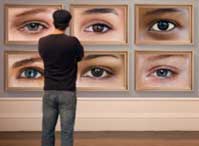 An allergy occurs when the body has an intense response to an irritant. Allergies can be triggered by substances in the environment, food, medications, perfumes, insect bites, jewelry, and topical products such as cosmetics, lotions and detergents. They can be mildly annoying and intermittent or life-threatening and chronic. They’re also very common. Some 50 million people in the United States are affected by allergies and the suffering can be serious indeed.
An allergy occurs when the body has an intense response to an irritant. Allergies can be triggered by substances in the environment, food, medications, perfumes, insect bites, jewelry, and topical products such as cosmetics, lotions and detergents. They can be mildly annoying and intermittent or life-threatening and chronic. They’re also very common. Some 50 million people in the United States are affected by allergies and the suffering can be serious indeed.
When someone who is allergic encounters an allergen, a substance that’s harmless to most other people, it trips the body’s alarm bells. The immune system senses that the body is under attack and releases chemicals called histamines to fight the allergen. The result, depending on what part of your body comes into contact with the allergen, can be itching, tearing eyes, sneezing, swelling, hives, rashes, vomiting, diarrhea, and even difficulty breathing or anaphylactic shock—a whole-body, life-threatening allergic reaction.
As an otolaryngologist, Dr. Yagoda knows that allergies are often linked to nasal disorder conditions such as sinusitis, asthma, and nasal polyps. In fact, the symptoms many people attribute to nasal allergies may not be allergies at all. If you’re experiencing a runny nose and having difficulty breathing, your discomfort may be caused by structural problems in the nasal passages or sinuses. For example, conditions such as Samter’s triad (an aspirin allergy related to nasal polyps) and Katagener syndrome (which can cause infections such as sinusitis), are examples of structural conditions that can manifest as symptoms of allergies. Many people who have complicated structural problems and disorders in the nose are also afflicted with allergies, and treating one without the other will not provide long-term relief. Allergists and internist often treat the allergies without identifying the structural problems due to a lack of the proper diagnostic instruments. It’s therefore important to see an otolaryngologist who can properly diagnose the underlying condition or conditions.
If it turns out that your symptoms are indeed a result of allergies, the first step in controlling the allergy is to properly identify the allergen. Dr. Yagoda takes a complete allergy history and may conduct a RAST (radioallergosorbent test) to determine exactly which avoidable allergens may be triggering your reactions. She also looks beyond the symptoms to determine whether structural defects, disorder, or obstructions, such as a deviated septum, nasal polyps, and swollen turbinates might be contributing to or even causing your discomfort. She then develops a treatment plan that encompasses lifestyle changes such as allergen avoidance; natural remedies; traditional medications; nasal sprays, and, if warranted, surgical repair.
Read about SLOWtox, a new medically proven treatment using Botox to temporarily stop a dripping, running nose.


































